Description
The Advanced longsword (also spelled as long sword or long-sword, known as a bastard sword) is a type of European sword characterized as having a cruciform hilt with a grip for two-handed use and a straight double-edged blade.
Specifications:
- Length 124 cm (48.8 inches)
- Blade length 90 cm (35.4 inches)
- Crossguard length 17.5 cm (6.9 inches)
- Handle 34 cm (13.4 inches)
- Weight 2205 g (4.86 lbs)
- Balance 0 cm from crossguard.
Extremely fast advanced longsword for great damage in longsword duels discipline.
Analysis of the “Advanced Longsword”
Abstract
The purpose of this essay is to state the historicity of the sword design in question, to classify it accordingly to the major typology systems which deal with medieval European swords, and to establish the possible compatible combinations of arms and armor.
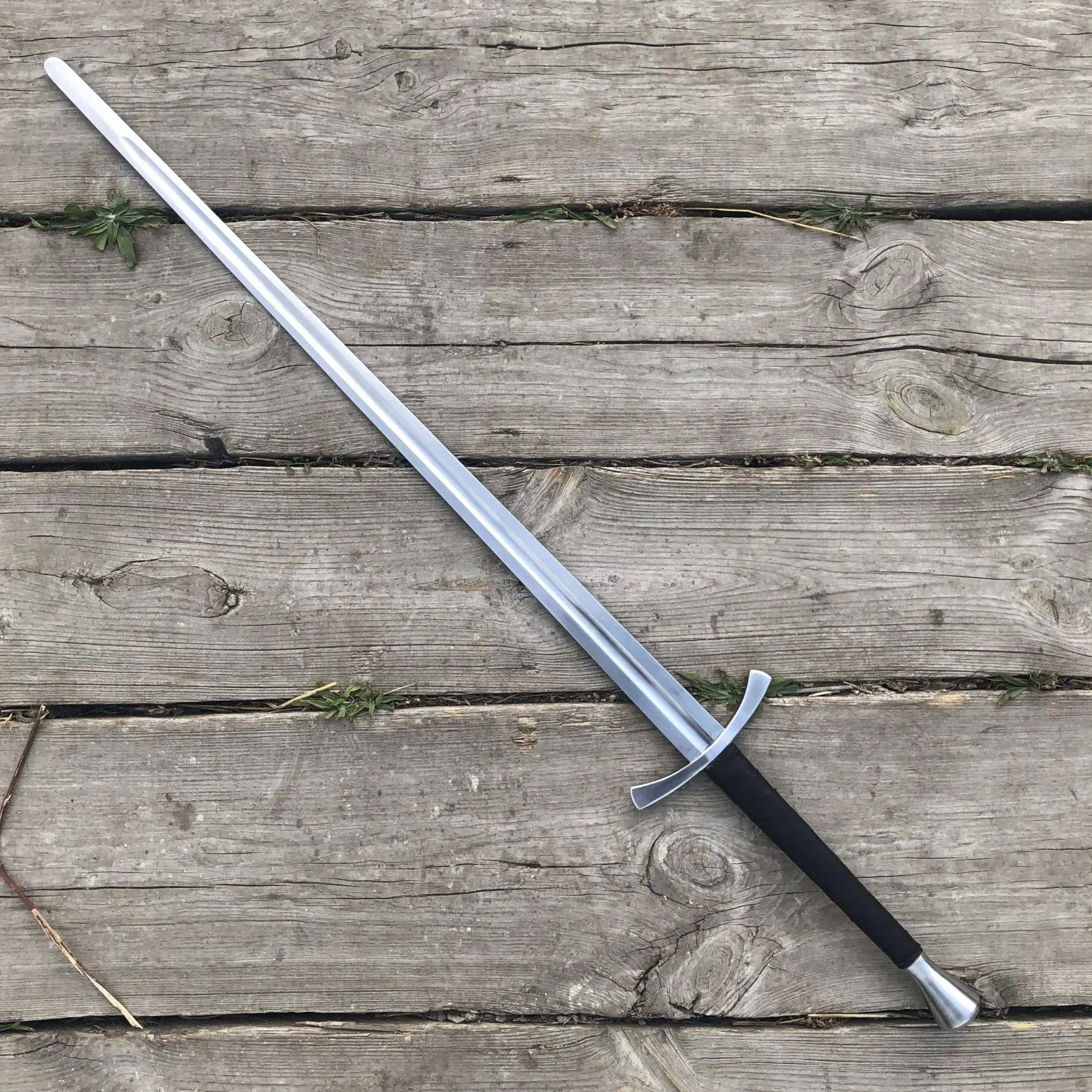
About “Longswords”
The term “longsword” generally refers to the double-edged sword design endowed with a handle and blade longer than most swords. The first bibliographic mention in historical sources about long two-handed swords is recorded in the Novel of Alexander from around 1180, however, the physical evidence for such weapons first appears only in the 13th century.
The weapon becomes very prominent between the late medieval and Renaissance periods, in which it varies in function, from the tool of war to self-defense implement, and even as a fashion and judicial resource, as in the “trials by combat”. It varies a lot in shape, both the blade and the hilt components such as guards, handles, and pommels. This happens, at least in part, due to the nature of the sword production activity, in the late middle ages, which involved rarely only a single artisan: instead, the sword manufacture process was composed of a series of different stages, with generally a “swordsmith” making solely the blades, and jewelers and other artisans (like wood and leatherworkers) making other parts of the weapons.
All these individual parts were then combined by the professional known as “cutler”, who assembled and effectively “sold” the sword to the final client. This complex process leads to an enormous variety of “longswords”, where some were even reshaped through the years, having pieces modified or replaced, even the entire blades.
In modern times, the term became synonymous with swords longer than the “arming sword” (the classical “knightly” one-handed sword) and shorter than true “two-handed swords”, like the german Zeinhanders, Italian “spadones” and the Spanish/Portuguese “espadon”/“montante”.
About the design’s classification according to the Typology of Oakeshott
Ronald Ewart Oakeshott (1916 – 2002) was a British collector, and amateur historian who is considered as one of the most preeminent scholars in the research of medieval European arms and armor, being one of the first to systematically classify these objects. Inspired by Jan Petersen’s work on weapons from the “Viking Age”, Oakeshott classified the swords which shared the same basic characteristics into “types”, including a classification of hilt components.
This culminated in the most popular sword classification: the so-called “Oakeshott Typology”.
The exemplar in question, despite being a sportive adaptation, can still be classified according to Oakeshott:
Accordingly to blade type: The blade, with a central fuller towards almost all, is an extension, its most similar to that of type XIIa (accordingly with the revision of Oakeshott’s typology, where he re-classified this sword blade as “sub type XIIa”. The overall shape is seen in various examples from the 14th and 15th-century examples as follows:
[caption id="attachment_14572" align="alignnone" width="300"] Figure 1 – Object Number IX.915 in Royal Armouries Museum. Probably Italian (ca 1350-1400).[/caption]
Figure 1 – Object Number IX.915 in Royal Armouries Museum. Probably Italian (ca 1350-1400).[/caption]
[caption id="attachment_14571" align="alignnone" width="300"] Figure 2 – Object from the Burrell Collection, Glasgow. Find-place unknown (ca. 1350).[/caption]
Figure 2 – Object from the Burrell Collection, Glasgow. Find-place unknown (ca. 1350).[/caption]
[caption id="attachment_14574" align="alignnone" width="300"] Figure 3 – This object is listed as from a private collection in Oakeshott’s work, and his location is unknown (ca. 1350-1400).[/caption]
Figure 3 – This object is listed as from a private collection in Oakeshott’s work, and his location is unknown (ca. 1350-1400).[/caption]
[caption id="attachment_14573" align="alignnone" width="300"] Figure 4 – Item sold at auction from Bonhams, in 2009.Provenance: The Late Mrs. G.E.P. How Collection, UK. (ca. 1350). This object has a vagally similar guard to the one present in the Medieval Extreme reproduction.[/caption]
Figure 4 – Item sold at auction from Bonhams, in 2009.Provenance: The Late Mrs. G.E.P. How Collection, UK. (ca. 1350). This object has a vagally similar guard to the one present in the Medieval Extreme reproduction.[/caption]
Accordingly to crossguard style:
The distinct trumpet-shaped terminals in the handguard are classified as “style 6”, with some resemblance also to “style 5”. It’s important to highlight the length of the hand-guard was shortened due to HMBIA safety regulations, however, the general shape is still similar to that of historical analogs, being this a necessary adaptation to comply with the sports rules.
A similar crossguard design appears in various examples:
[caption id="attachment_14569" align="alignnone" width="300"] Figure 5 – Object Number IX.1084 in Royal Armouries Museum. Probably Italian (ca 1350-1400).[/caption]
Figure 5 – Object Number IX.1084 in Royal Armouries Museum. Probably Italian (ca 1350-1400).[/caption]
[caption id="attachment_14568" align="alignnone" width="300"]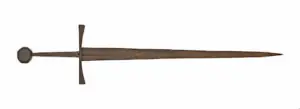 Figure 6 – Item sold at auction from Bonhams, in 2013.Provenance: Unknown (ca. 1350). This object has a similar guard to the one present in the Medieval Extreme reproduction[/caption]
Figure 6 – Item sold at auction from Bonhams, in 2013.Provenance: Unknown (ca. 1350). This object has a similar guard to the one present in the Medieval Extreme reproduction[/caption]
Accordingly to pommel type:
The “pear” shape of the pommel can be easily fitted in the “Type T”, subtype 5.
[caption id="attachment_14570" align="alignnone" width="300"]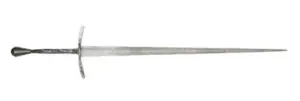 Figure 7 – Item sold at auction from Bonhams, in 2008.Provenance: Viktor Monetti Collection – Galerie Fischer, Lucerne, 17 June 1993, lot 8087(ca. 1300-1450). This object has also a similar guard to the one present in Medieval Extreme reproduction.[/caption]
Figure 7 – Item sold at auction from Bonhams, in 2008.Provenance: Viktor Monetti Collection – Galerie Fischer, Lucerne, 17 June 1993, lot 8087(ca. 1300-1450). This object has also a similar guard to the one present in Medieval Extreme reproduction.[/caption]
Conclusion about Advanced Longsword by MedievalExtreme
Considering all the extant examples here presented, the reproduction in question can be classified as a “longsword type XIIa, with cross guard style 6 and pommel type T5” according to Oakeshott’s sword typology.
Even with all the adaptations and safety modifications, the Advanced longsword in question is still similar enough to historical examples from the 14th to the first half of the 15th century, being adequate to be used in congruence with European armor from the period. It is valid to highlight as well that the sword, as a sportive implement, meets all the standards established in both HMBIA and IMCF ruleset.
Bibliographic References
MUKSEN, M.J. Julgamentos por Combate: Uma Análise do Pensamento Jurídico Medieval Europeu. Faculdade de Educação Superior do Paraná, Curitiba, Brazil. 2019.
OAKESHOTT, R.E. The Archaeology of Weapons: Arms and Armour from Pre-history to the Age of Chivalry. Lutterworth Press, London. 1960.
OAKESHOTT, R.E. Records of the Medieval Sword. Boydell Press, London. 1991.
Sword (1350-1400). Royal Armouries – National museums of arms and armour, Leeds, Uk. Accessed on: October 29th. 2020.
A Medieval Sword. Bonhams Fine Art Auctioneers, London, April 24, 2013. Accessed on: October 29th. 2020.
A Medieval Sword. Bonhams Fine Art Auctioneers, London, December 1st, 2009. Accessed on: October 29th. 2020.
A Late Medieval Thrusting Sword. Bonhams Fine Art Auctioneers & Valuers, London, November 26, 2008. Accessed on: October 29th. 2020.


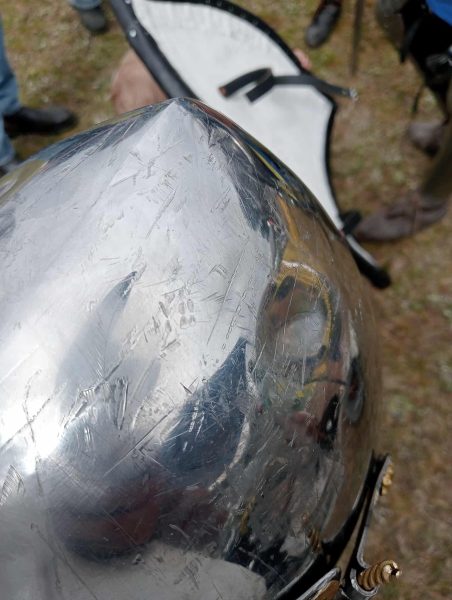

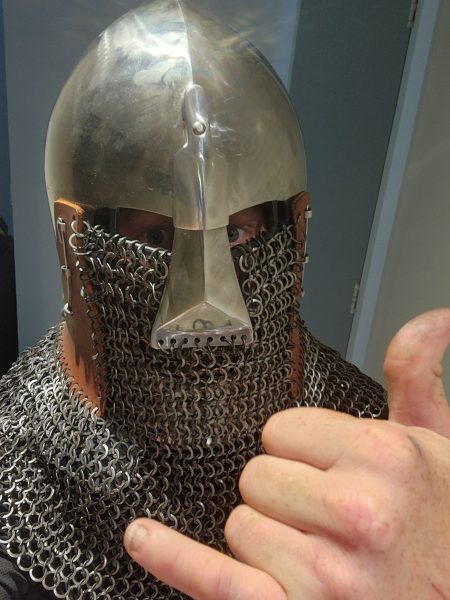

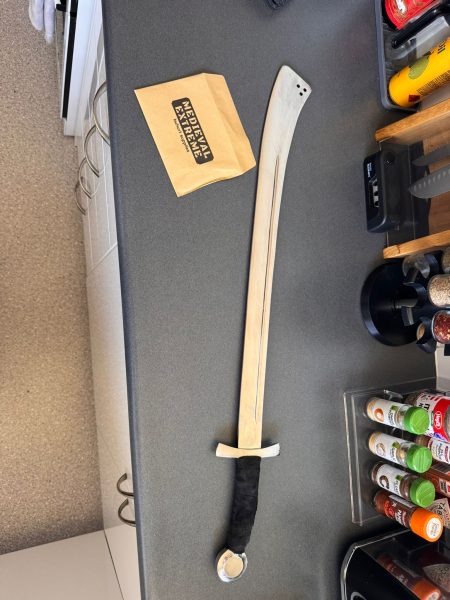
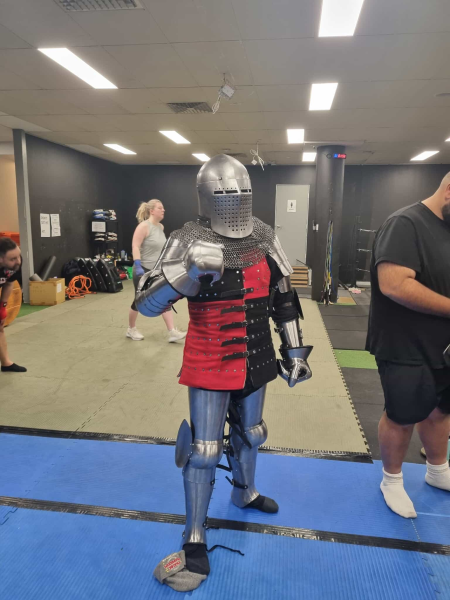
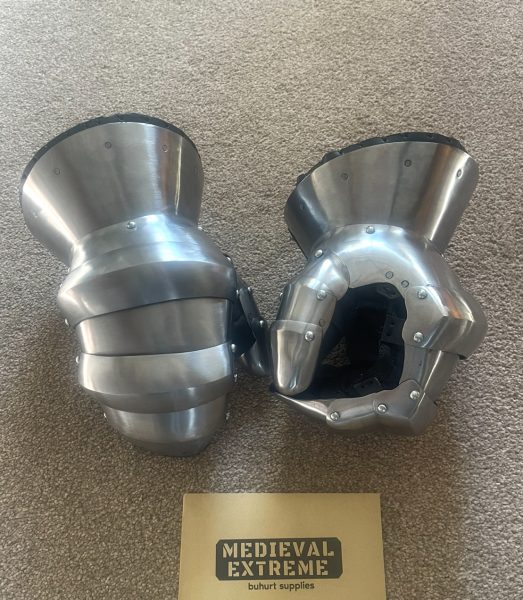
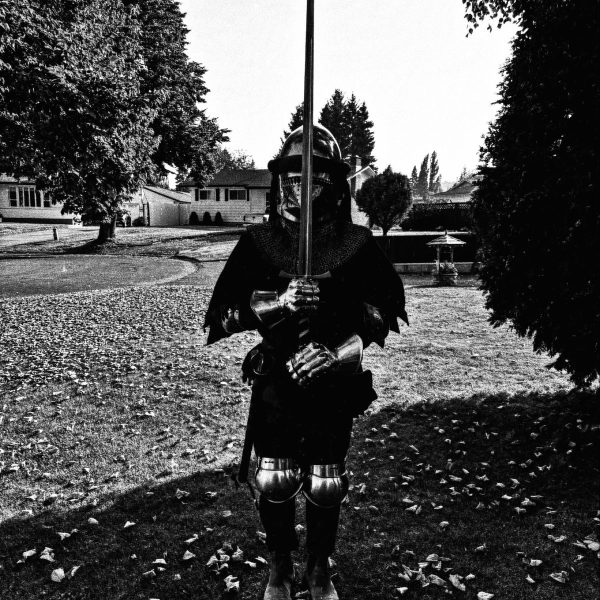
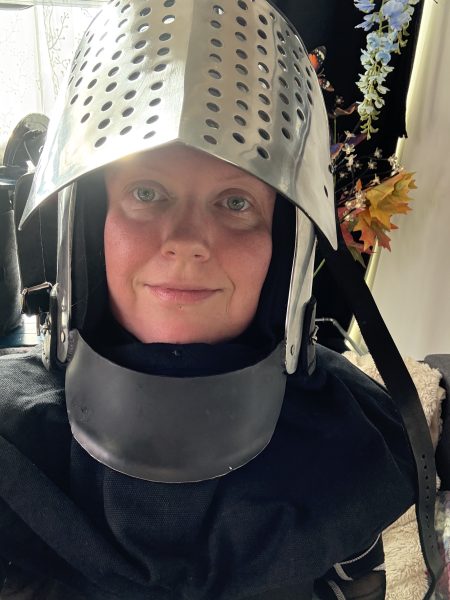
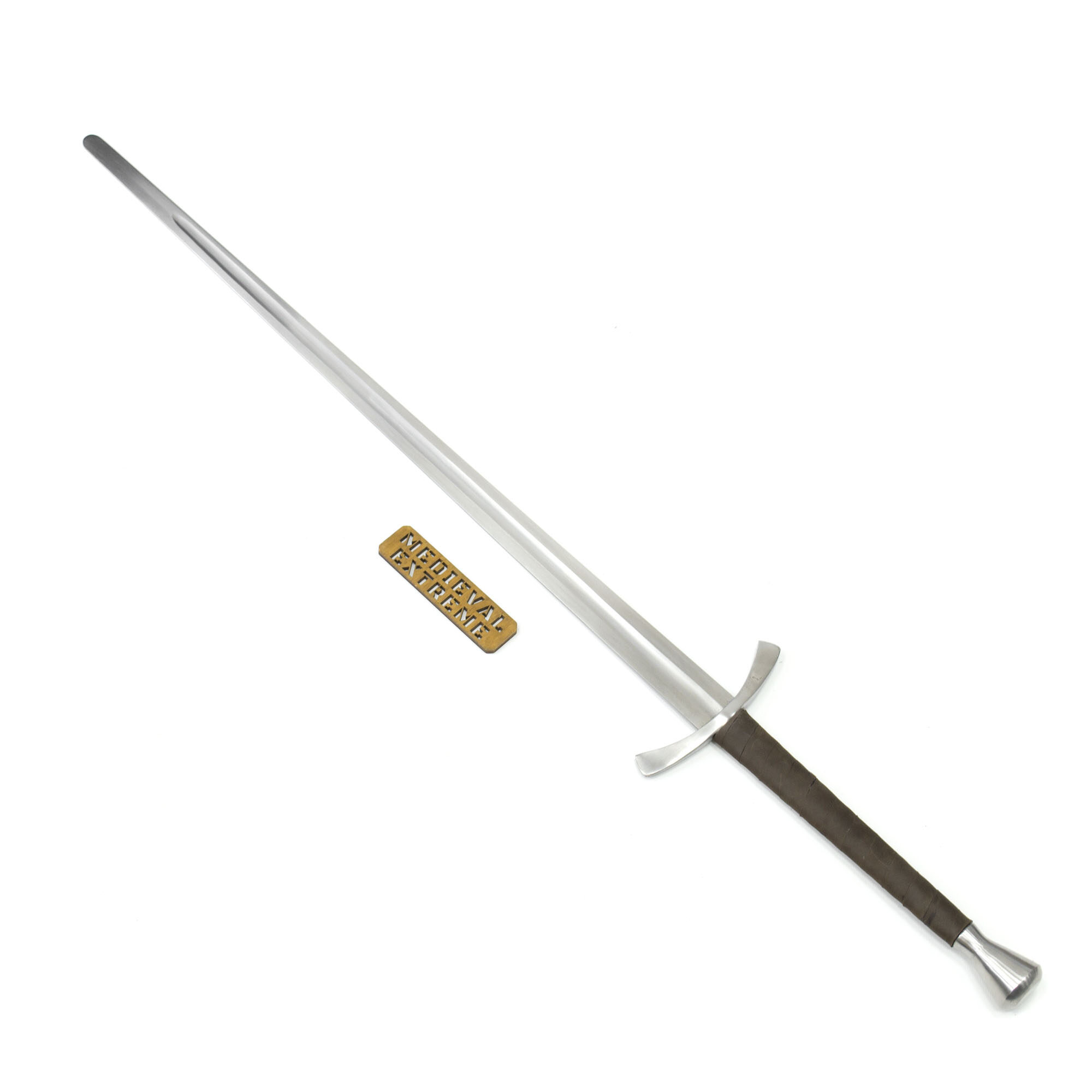
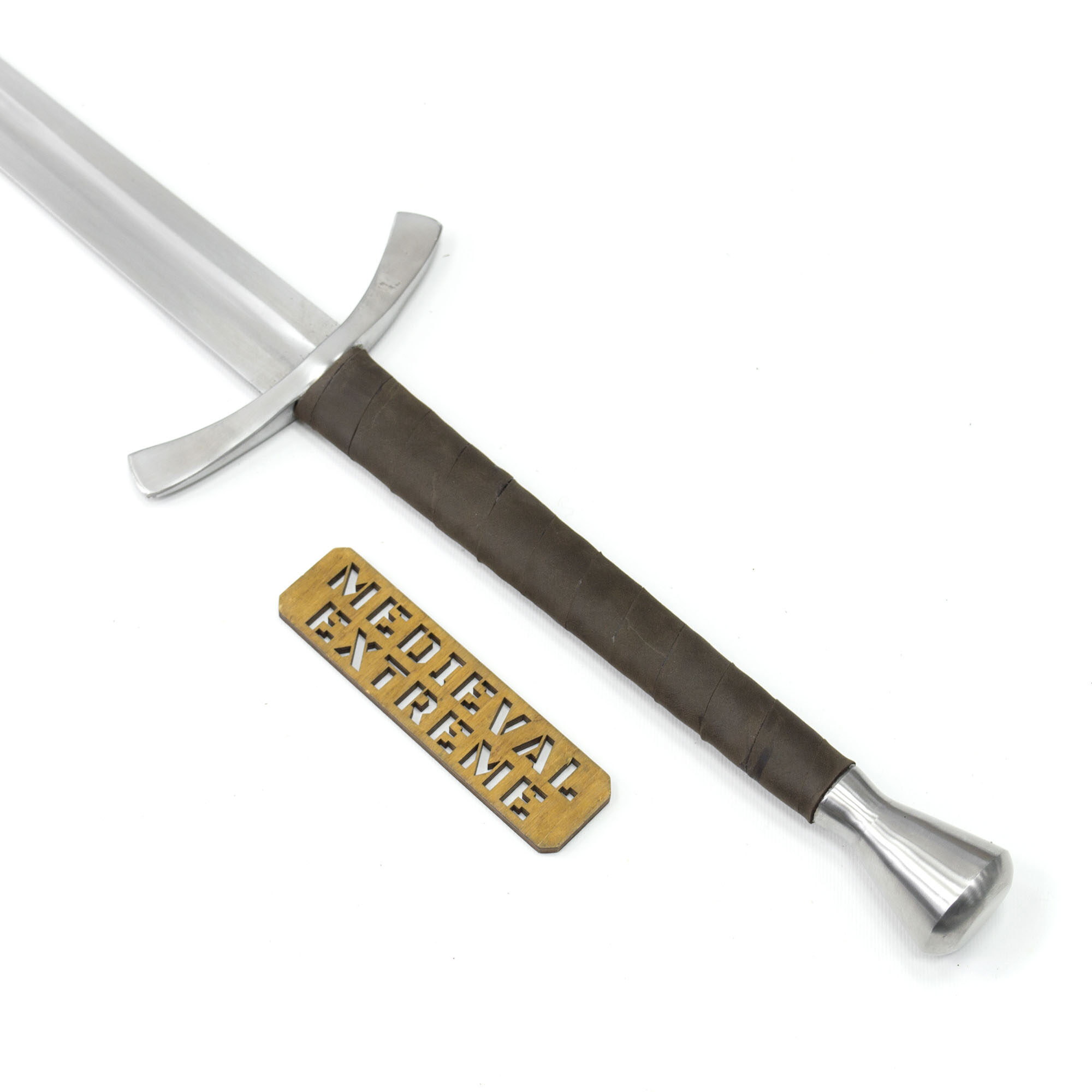
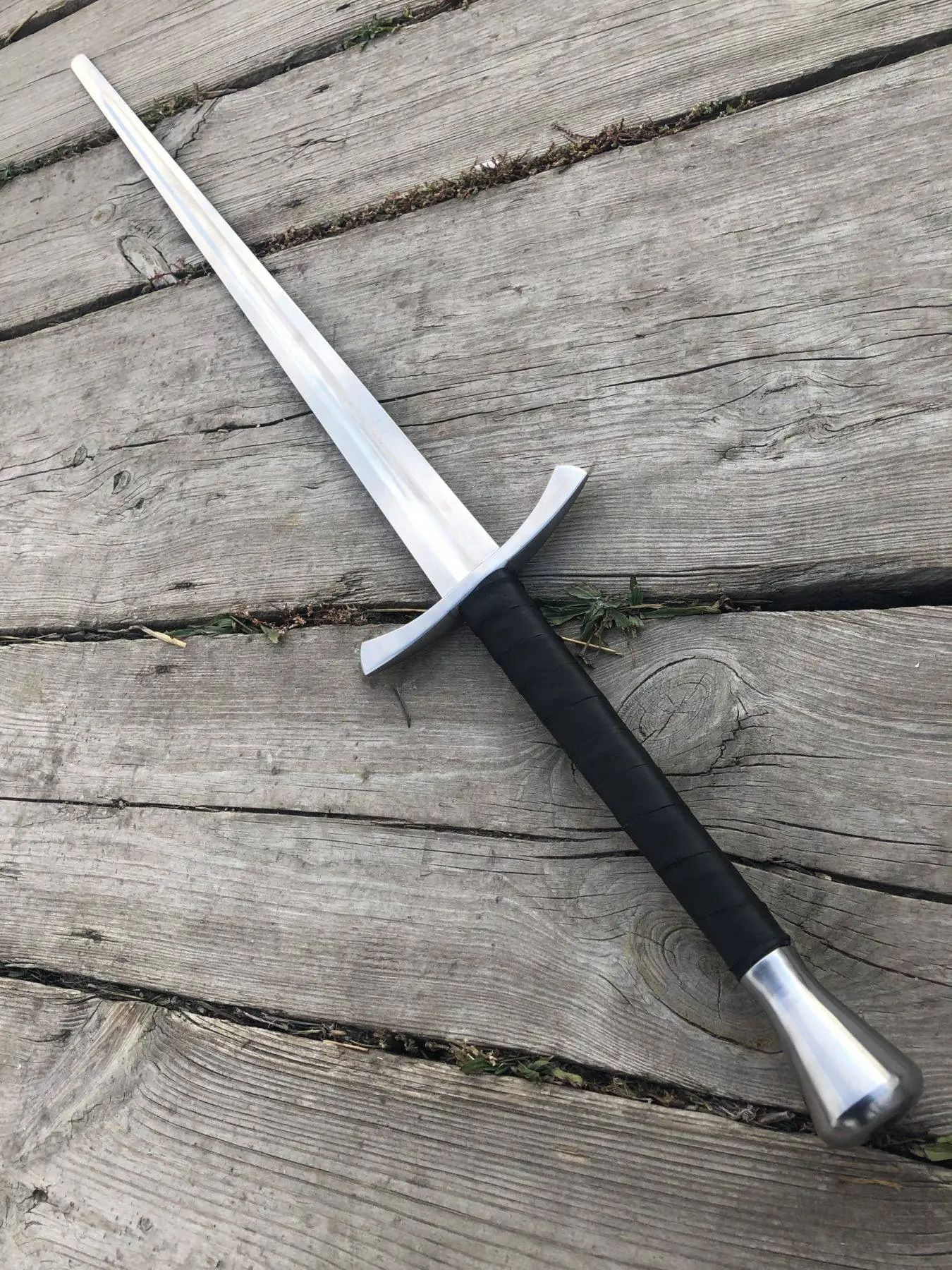
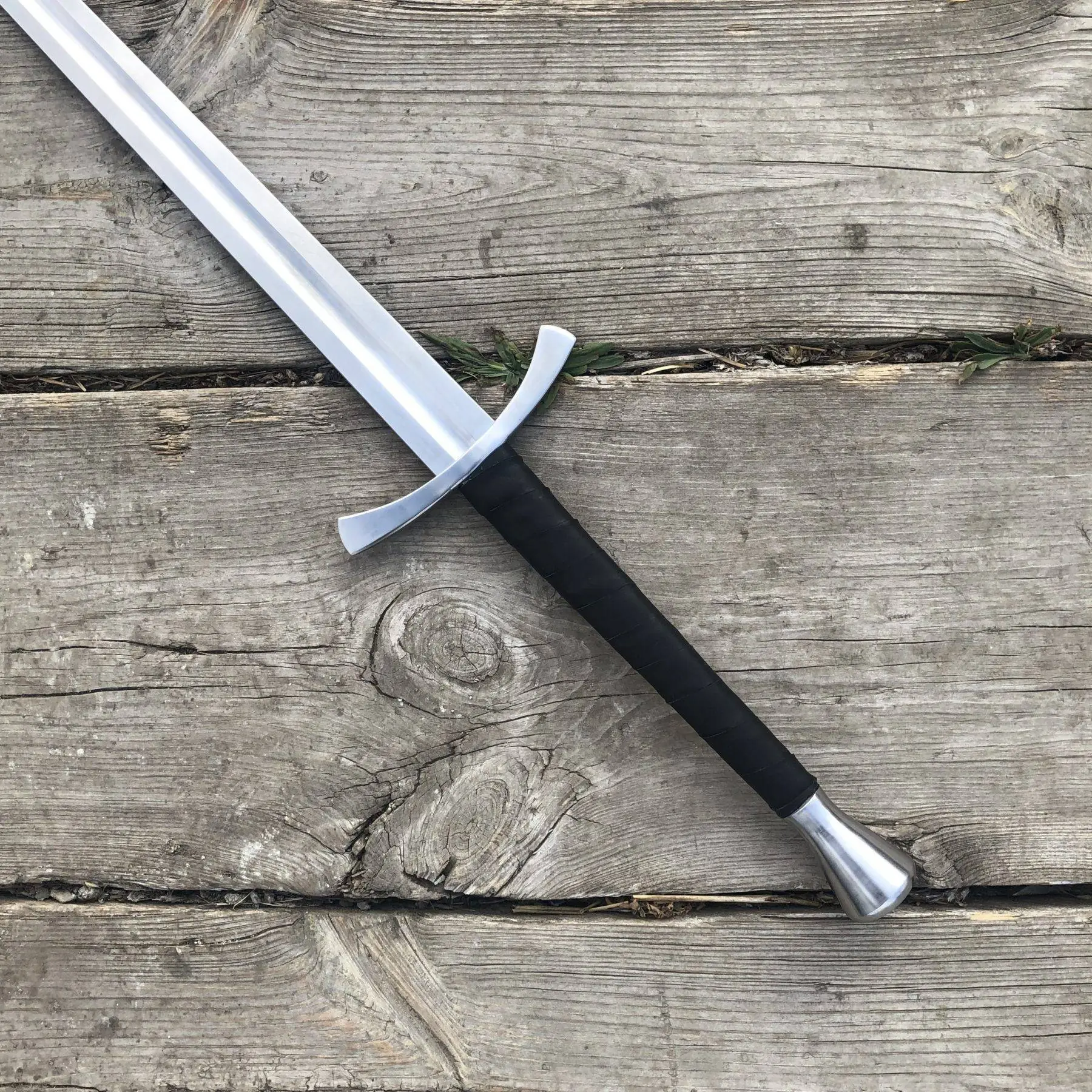

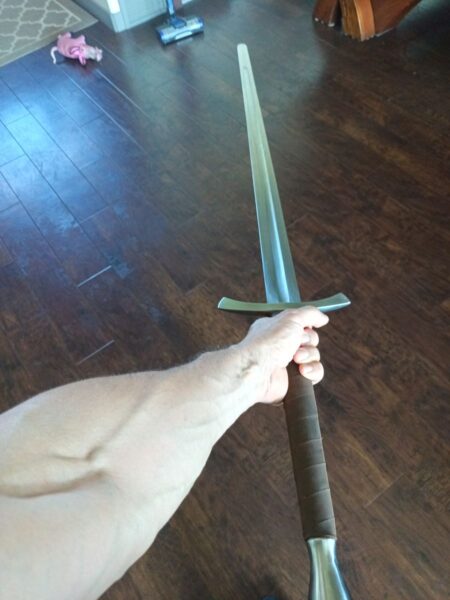
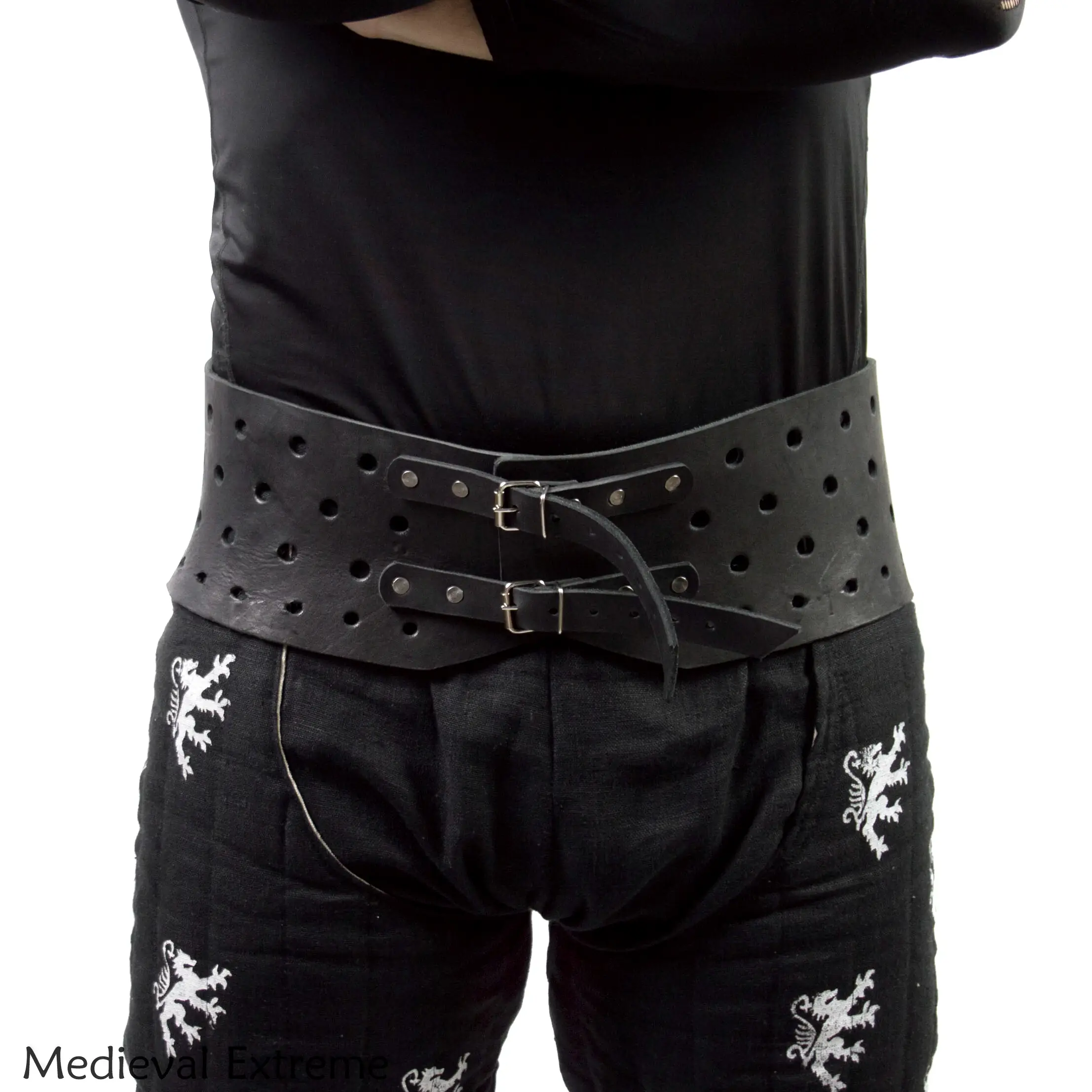
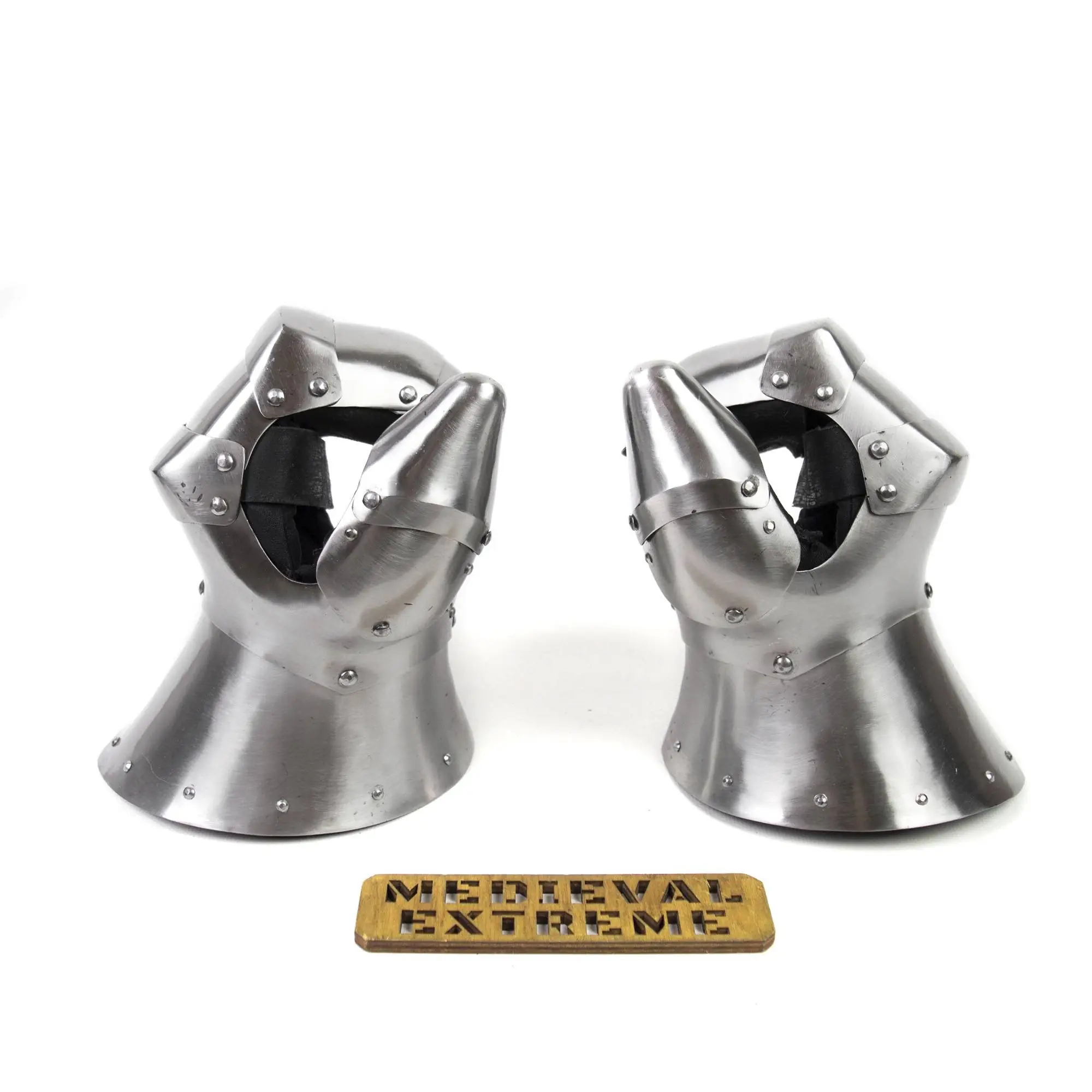


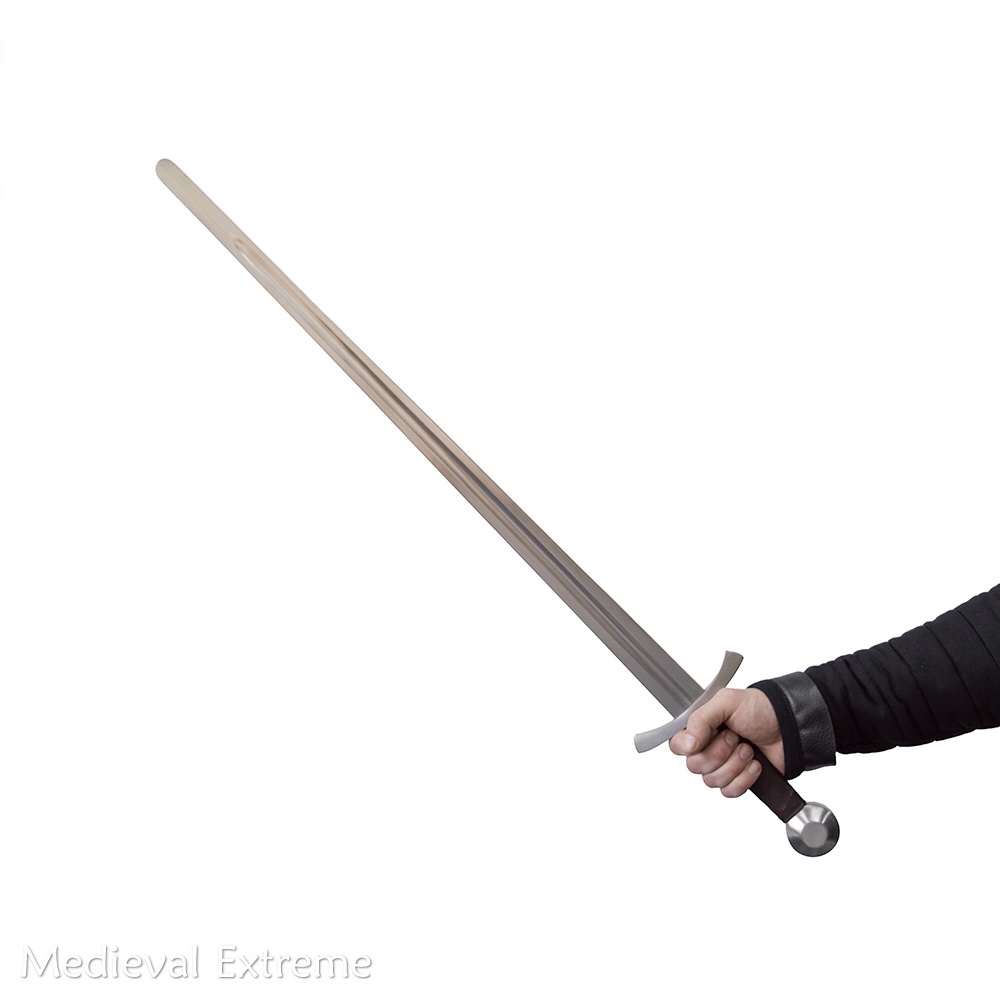
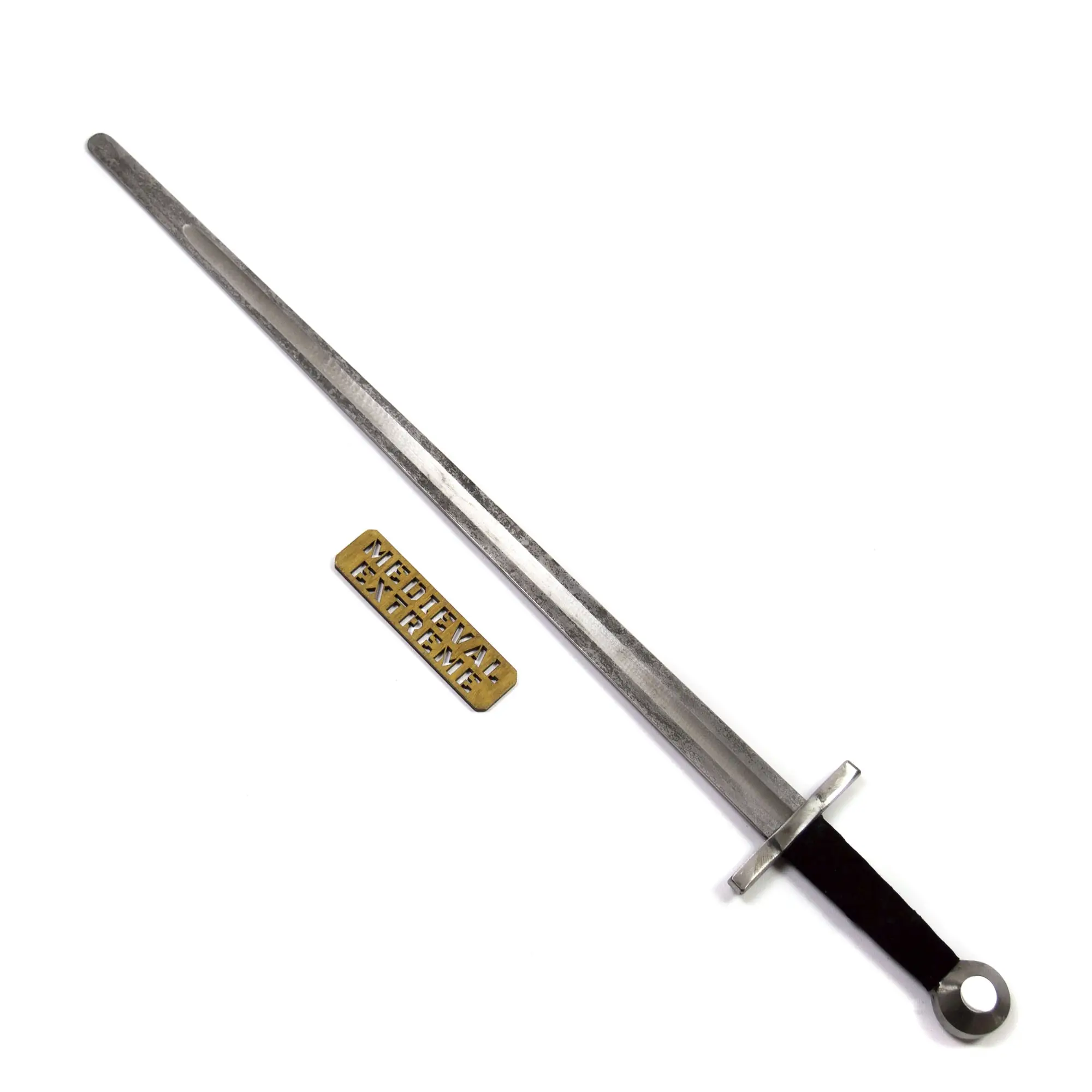
![Zweihander 2.0 two-handed sword [5mm]](https://medievalextreme.com/wp-content/uploads/2025/07/DSC_1426-Edit-2.jpeg)
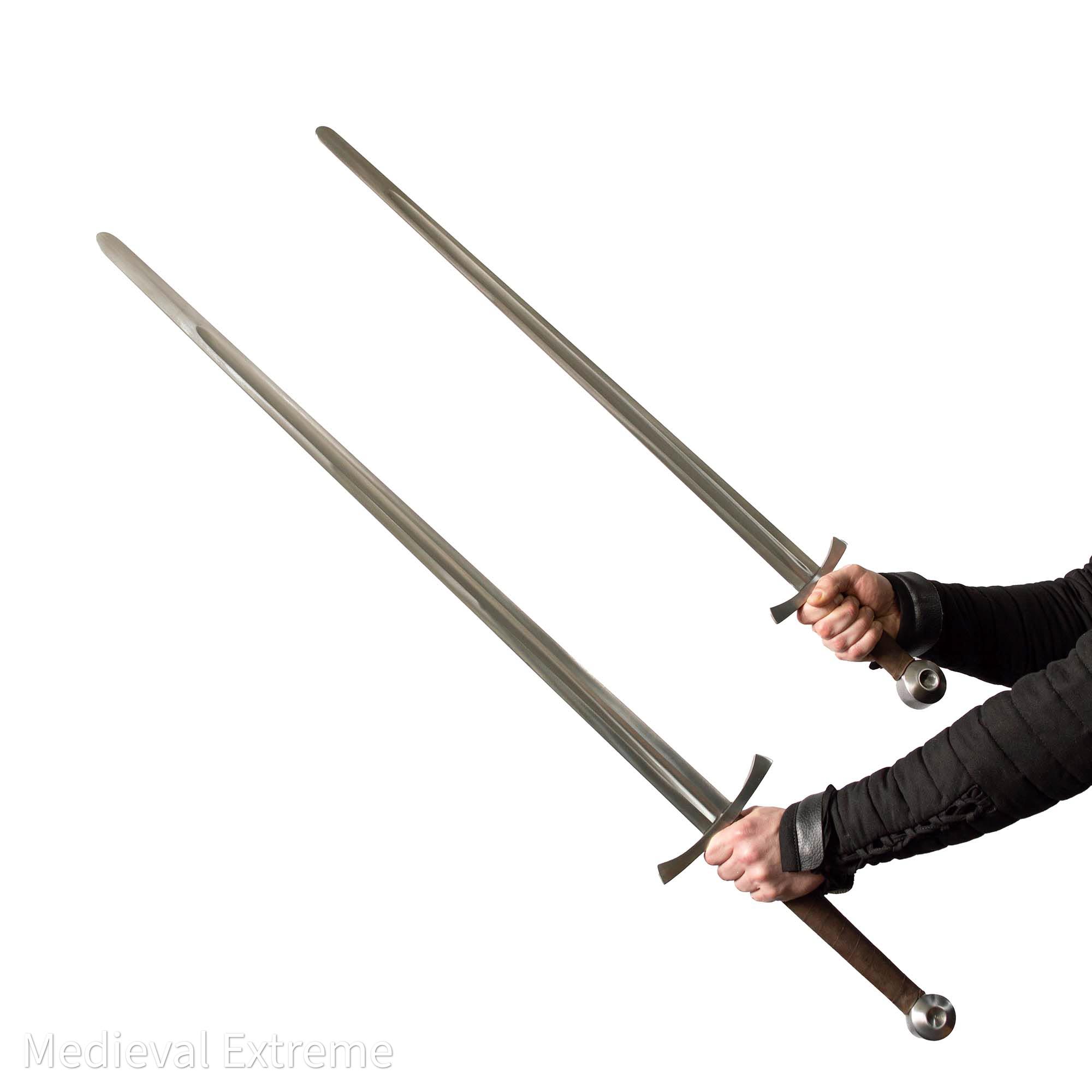
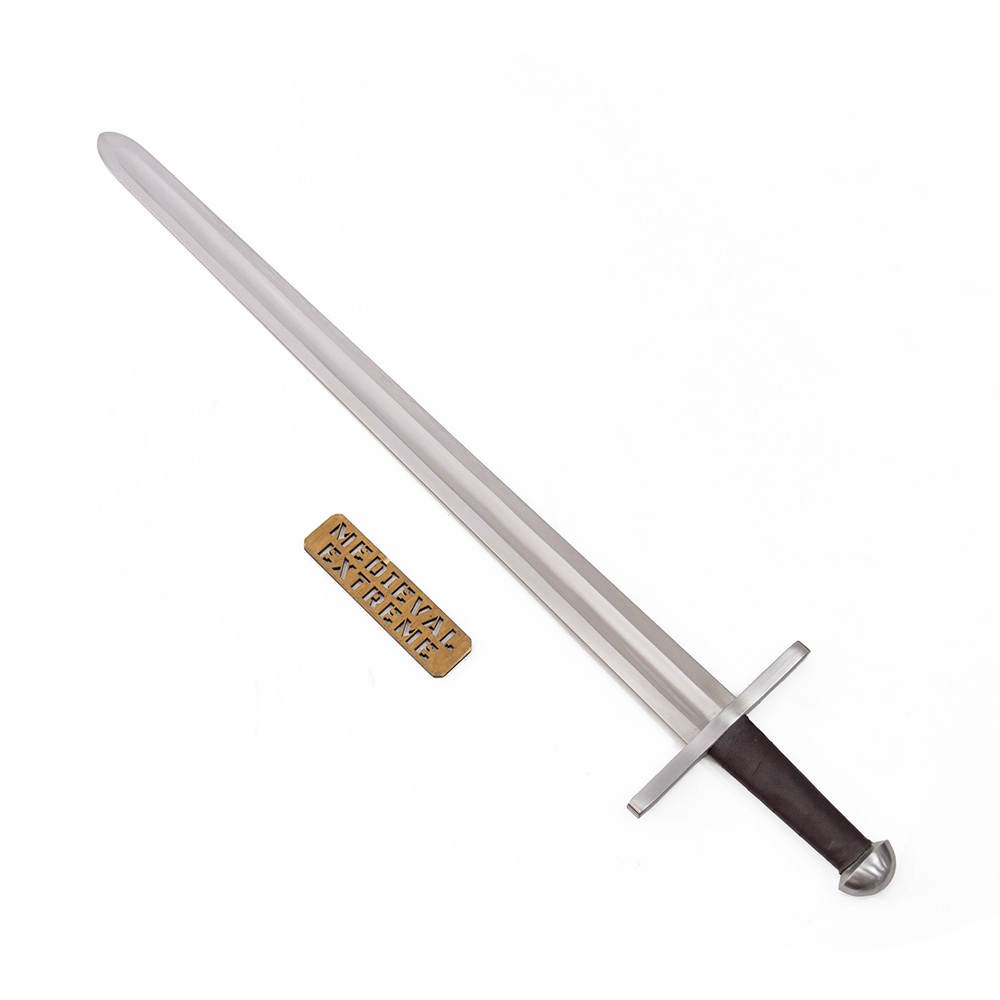
![Light one-handed sword [1.1 kg]](https://medievalextreme.com/wp-content/uploads/2023/05/72F462FC-1156-4F84-96F2-1B31BDD8A41A.jpeg)
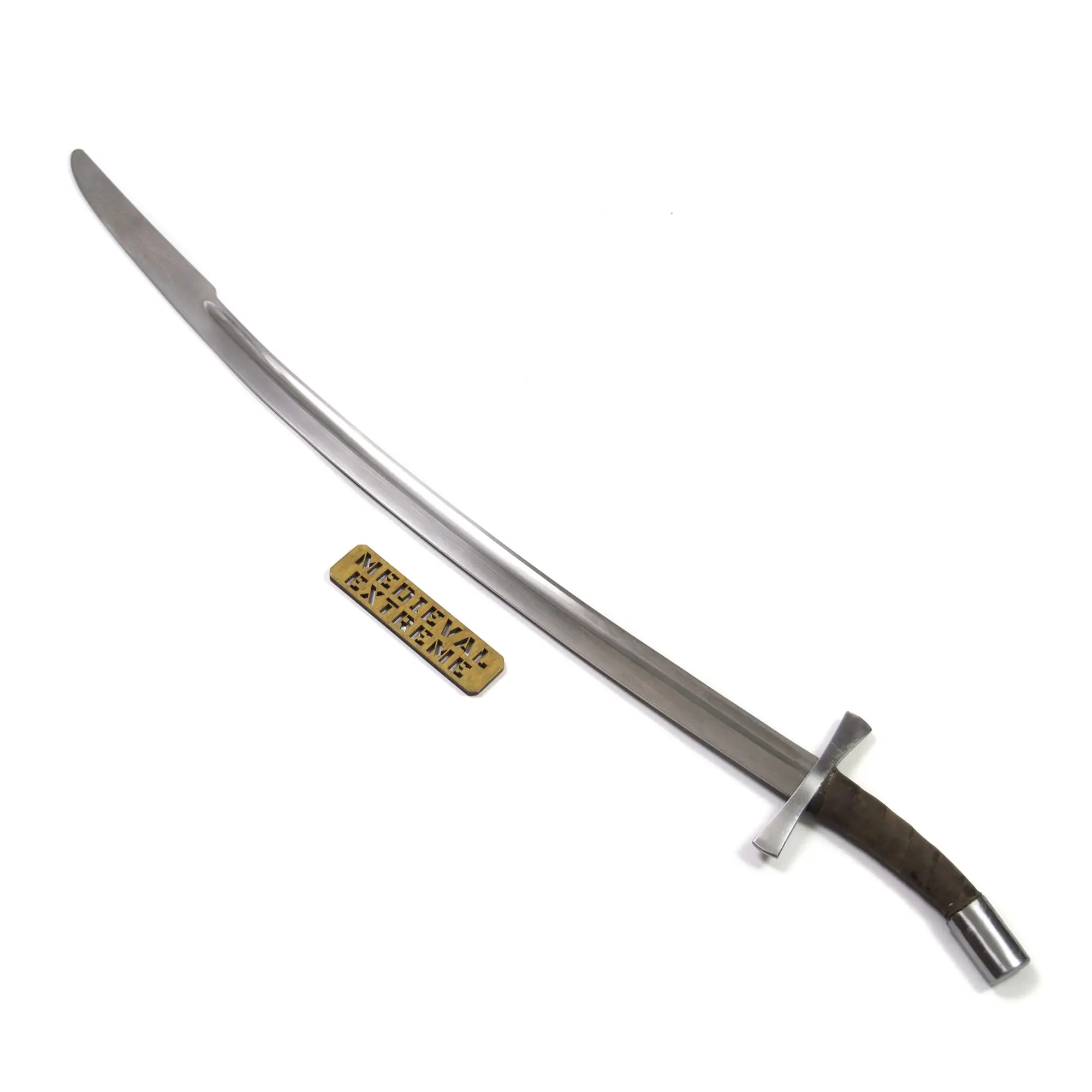
![Falchion Knight [longsword specs]](https://medievalextreme.com/wp-content/uploads/2025/04/DSC_093911-Edit-2.jpeg)
Ils sont parfait !
I bought the full advanced Rise floating kit. Very comfy, easy to move in, and still really strong. The floating design makes it feel light and flexible, great maneuverability while keeping you well protected. Great quality build and perfect fit worth every cent.
Fits perfect. Also if you got questions they answer very fast and really help. Thank you again.
This is a wonderful sword! It was very well named indeed. Strikes from the Conqueror hit noticeably harder than any 1h weapon I’ve ever fought with or against. The exceptionally forward weighting of the blade gives the sword outstanding directional stability when it’s in motion. So it can be slower, but it arrives with confidence in attack & defence. I find griping the end of handguard & pommel, you get maximum momentum & blade control, as it’s still very easy to manoeuvre & it’s very solid in defence. If you do get the opportunity to use the a long range of motion possible with a single handed weapon strike, it lands *massive* hits!
You already know what the sword looks like, so instead I put my opponent’s helmet after our tournament fight in Sep. The 3 dents are my 3 Conqueror hits – downward, full beans strikes, with windup & forward step. Notice they are the only strikes which did more than a scratch.
In summary, I love this sword & every fight I have with it!
Honestly my favorite helmet to use to date. Absolutely bombproof to the point when i was testing how it would take blows my axe broke before i did damage to the helmet. couldn’t be happier with this helm.
PS better peripheral vision then any wolf rib i’ve ever fought in but just as breathable. (at the cost of low leg visibility so keep that in mind if that’s something you want)